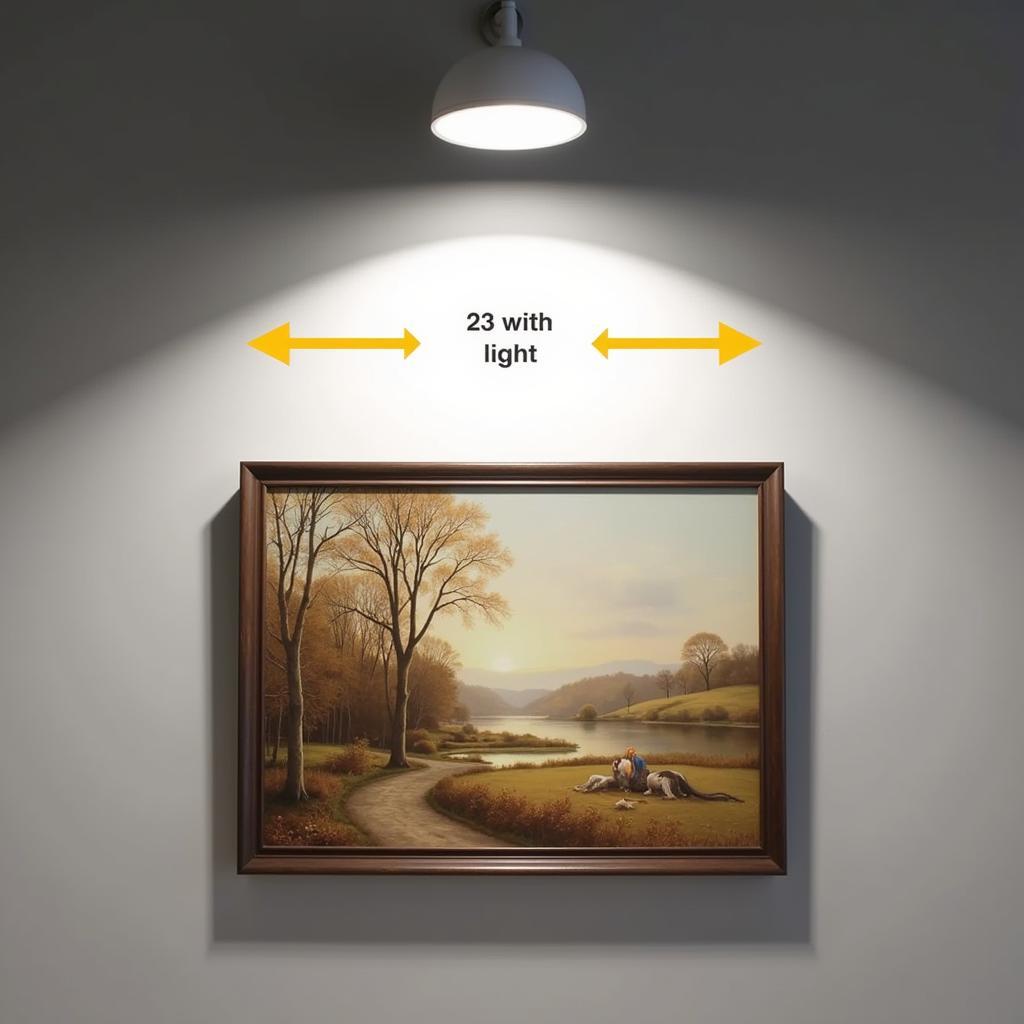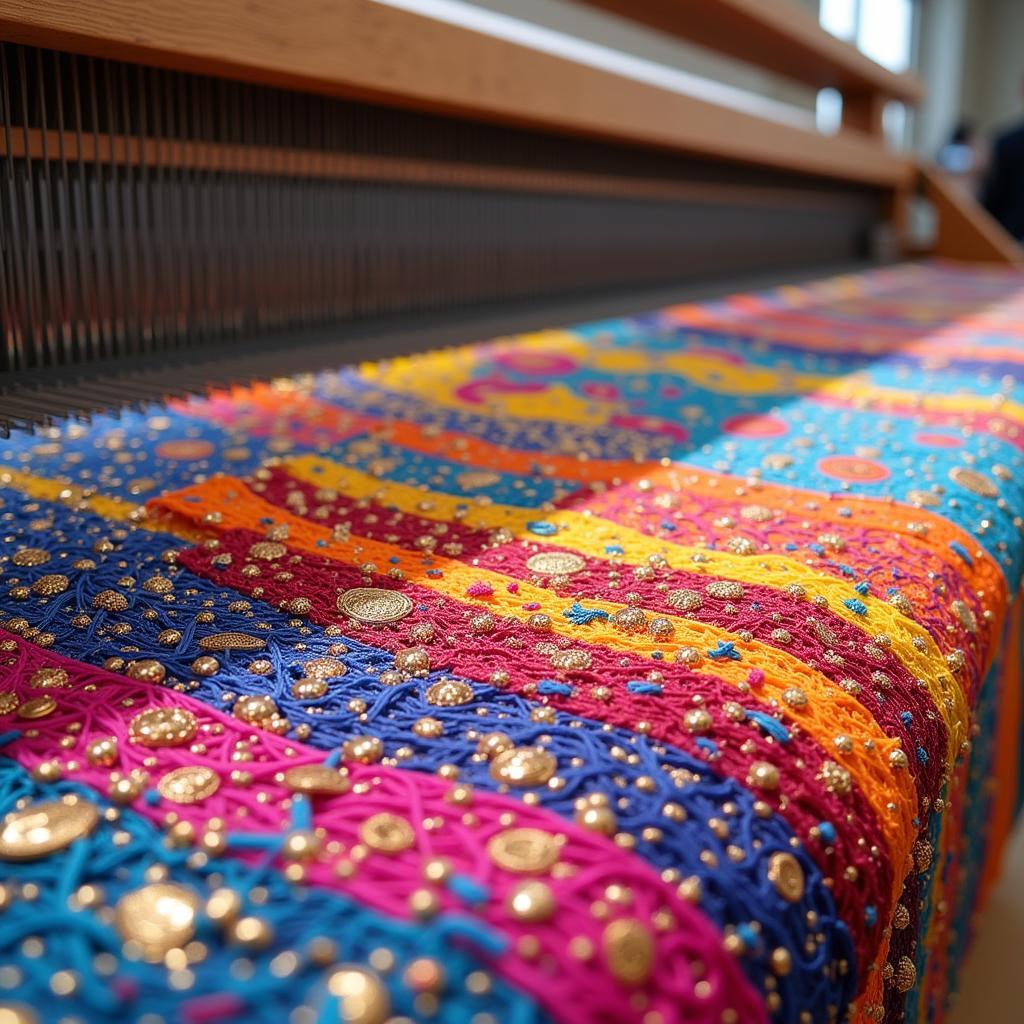Illuminating Your Artwork: The Ultimate Guide to Picture Lights Over Art
Picture lights over art are a sophisticated and effective way to showcase your cherished pieces while adding a touch of elegance to your space. Whether you’re a seasoned art collector or just starting to build your collection, understanding the nuances of picture lighting is crucial to enhancing the viewing experience and preserving your artwork’s vibrancy. From selecting the right type of picture light to optimizing its placement and considering the impact on different art forms, this guide will illuminate everything you need to know about picture lights over art.
Adding a picture light above your artwork can transform a simple painting into a focal point, drawing the viewer’s eye and creating a sense of drama. Imagine a dimly lit room, where a single beam of light accentuates the texture and color of a pop art dog painting. That’s the power of a well-placed picture light. It not only enhances the artwork itself but also contributes to the overall ambiance of the room. It’s like giving your art its own personal spotlight. Just after getting back from the Lakefront Festival of Arts Milwaukee, I knew I needed to enhance the lighting for my newest acquisitions.
Choosing the Right Picture Light: A Style for Every Piece
Selecting the right picture light involves considering several factors, including the size and style of your artwork, the surrounding decor, and the desired lighting effect. For smaller pieces, a more compact picture light will suffice, while larger artworks might benefit from a longer fixture to provide even illumination. Are you illuminating a contemporary abstract flower wall art? A sleek, minimalist picture light might be the perfect complement. Or perhaps you have a classic oil painting that requires a more traditional fixture. The options are diverse and cater to various aesthetic preferences.
Placement Perfection: Where to Position Your Picture Light
The placement of your picture light plays a vital role in how your artwork is perceived. Ideally, the center of the light should be positioned approximately one-third down from the top of the artwork. This ensures even distribution of light across the canvas and minimizes glare. Avoid placing the light too high, as this can create shadows and diminish the impact of the piece. Similarly, positioning the light too low can cast an unflattering upward glow. Consider also the distance between the light and the artwork. Too close, and the light might create hotspots; too far, and the illumination might be too diffused.
 Optimal Picture Light Placement Over Artwork
Optimal Picture Light Placement Over Artwork
Experimenting with different positions can help you find the sweet spot that best showcases your art. What works for a large landscape might not be ideal for a small portrait. Take your time and adjust until you achieve the desired effect. Remember, the goal is to enhance, not overpower, the artwork.
Illuminating Different Art Forms: Specialized Lighting Considerations
Different art forms require different lighting approaches. For instance, oil paintings benefit from warmer light temperatures that enhance the richness of the colors, while watercolors might look best under cooler, more neutral light. Sculptures, on the other hand, require lighting that emphasizes their three-dimensional form and creates intriguing shadows. Understanding the interplay of light and shadow is crucial when illuminating sculptures. A strategically placed picture light can bring out the texture and contours of a sculpture, adding depth and dimension to the piece.
 Picture Light for Different Art Styles
Picture Light for Different Art Styles
If you’re looking to add some unique pieces to your home, consider checking out cosmetic wall art for a bold statement.
Picture Light Technology: From Halogen to LED
Picture light technology has evolved significantly over the years. Traditional halogen bulbs, while effective, have been largely replaced by more energy-efficient and longer-lasting LED options. LEDs offer several advantages, including lower energy consumption, reduced heat output, and a wider range of color temperatures. This allows for greater control over the lighting effect, enabling you to fine-tune the illumination to perfectly complement your artwork.
FAQ: Your Picture Light Questions Answered
-
What is the ideal color temperature for a picture light? Generally, a warm white (2700-3000K) is suitable for most artworks.
-
How do I prevent glare from a picture light? Proper placement and angling of the light are crucial. Some picture lights also come with anti-glare features.
-
Can I use a picture light on a framed photograph? Absolutely! Picture lights are ideal for showcasing framed photographs and other artwork on paper.
-
Are battery-operated picture lights a good option? Battery-operated lights can be convenient for smaller artworks or in areas where wiring is difficult.
-
What is the average lifespan of an LED picture light? LED picture lights can last for tens of thousands of hours.
-
Can I use a dimmer switch with a picture light? Yes, many picture lights are compatible with dimmer switches, allowing you to control the brightness.
-
Where can I buy picture lights? Picture lights are available at various retailers, including lighting stores, home improvement stores, and online marketplaces.
Picture Light Price Ranges
| Picture Light Type | Price Range |
|---|---|
| Basic LED Picture Light | $30 – $75 |
| Premium LED Picture Light with Dimmer | $75 – $150 |
| Designer Picture Light | $150+ |
| Battery Operated Picture Light | $20 – $50 |
Common Picture Light Scenarios
-
Scenario 1: You have a large oil painting above your fireplace and want to highlight it with a picture light. Consider a longer picture light with a warm white LED bulb to enhance the colors of the painting.
-
Scenario 2: You have a collection of small framed prints in a hallway and want to add some subtle illumination. Individual picture lights above each print can create a gallery-like effect.
-
Scenario 3: You have a sculpture on a pedestal and want to accentuate its form. A directional picture light placed above and slightly to the side can create dramatic shadows and highlights.
Further Exploration: More Art and Lighting Resources
For more inspiration and information on art and lighting, you might be interested in learning about art in the park auburn ny or exploring different styles of abstract flower wall art.
In conclusion, picture lights over art are a transformative addition to any space. By carefully considering factors such as placement, style, and technology, you can illuminate your artwork in a way that enhances its beauty, preserves its integrity, and elevates the overall aesthetic of your environment. The right picture light can truly make your artwork shine.
For assistance with picture lights or any other art-related inquiries, please contact us at Phone Number: 02462573573, Email: danteum@gmail.com, or visit us at Savico Megamall, 7-9 Đ. Nguyễn Văn Linh, Gia Thụy, Long Biên, Hà Nội 10000, Vietnam. Our customer service team is available 24/7 to help you find the perfect lighting solution for your artwork.

